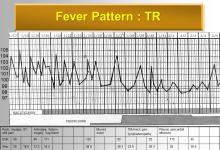Secukinumab promise in PMR is real Save

GCA is getting steroid-sparing therapy choices, and PMR doesn’t want to miss out. Most PMR patients with current therapy approaches incur multiple grams of cumulative prednisolone exposure, even though they’re often exactly the kind of patients we would rather keep away from steroids altogether. Yet we only recently got our first steroid-sparing choice in PMR, sarilumab, and conventional registration studies seem hard to run.
Choice is not just good, it is often necessary, and secukinumab promises just that in both PMR and GCA. At EULAR 2025, there is real-world data examining secukinumab’s utility in patients in GCA patients who have had refractory disease on tocilizumab (POS0761) – a clear example where the choice we take for granted in many other rheumatic diseases will be necessary in being able to serve the breadth of disease in GCA and PMR. Secukinumab had a positive phase 2 RCT finding in GCA with the TiTAIN study, and the phase 3 RCT of secukinumab in GCA (GCAptAIN) is soon to report.
Parallel to GCAptAIN has been a phase 3 RCT of secukinumab in PMR, REPLENISH. While IL-17’s mechanistic plausibility provided sufficient faith to proceed with this phase 3 in PMR, secukinumab has not been directly examined in PMR until now. Given the close relationship between PMR and GCA, it makes sense to look at the secukinumab GCA studies, and see how patients with concomitant PMR did on secukinumab. A post-hoc analysis looked at exactly that, and was presented as an oral abstract on the first afternoon of EULAR 2025 (OP0062).
The results are sufficiently stark to provide plenty of hope for secukinumab in PMR going forward. Only one of 27 patients in the secukinumab arm experienced PMR symptoms on treatment, compared to six of 25 in the placebo arm (four with pre-existing PMR, and two with new PMR symptoms). Secukinumab was well-tolerated in this patient population, and we know that it has an infection risk profile which is likely to be highly desirable.
PMR will probably get a rougher run than GCA in clinical trials in the years to come, and until someone does something about that to make PMR drug development workable and sustainable (for both established and newly-diagnosed disease), PMR will have to take cues from GCA where it can. GCA studies have provided exactly that for secukinumab in PMR, and hopefully this is the start of providing real therapeutic choice in PMR beyond steroid monotherapy.
Join The Discussion
This is wonderful











If you are a health practitioner, you may Login/Register to comment.
Due to the nature of these comment forums, only health practitioners are allowed to comment at this time.